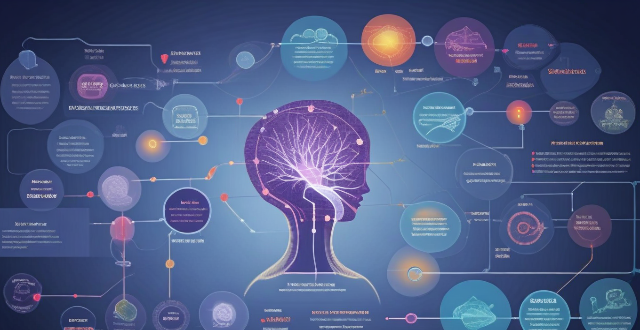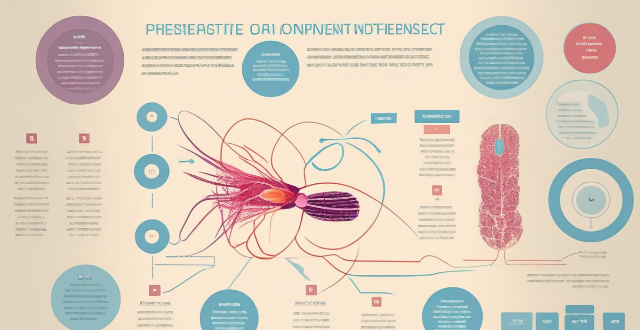Disease Infectious

Are there any alternative methods for preventing infectious diseases besides vaccination ?
Besides vaccination, there are several alternative methods that can help prevent the spread of infectious diseases, including hand hygiene, wearing personal protective equipment (PPE), following respiratory etiquette, and maintaining safe food practices. These measures can reduce the risk of infection and contribute to controlling the spread of infectious diseases.

Can vaccines be used to treat cancer or other non-infectious diseases ?
Vaccines are traditionally used to prevent infectious diseases by stimulating the immune system to recognize and attack specific pathogens. The possibility of using vaccines for the treatment of cancer or other non-infectious diseases is being explored, with a focus on modulating the immune response rather than stimulating it. Cancer vaccines, including preventive and therapeutic types, aim to stimulate the immune system to recognize and destroy tumor cells. For autoimmune diseases, researchers are exploring ways to use vaccines to dampen overactive immune responses or retrain the immune system. Vaccines are also being investigated for their potential in treating other chronic diseases such as Alzheimer's and heart disease. While promising, the application of vaccines in treating non-infectious diseases faces significant challenges, including identifying unique targets and balancing immune responses. Advancements in immunology and vaccine technology offer hope for new treatments that could benefit millions worldwide.

What are the key challenges facing global health security today ?
Global health security faces several key challenges, including emerging infectious diseases, antimicrobial resistance, weak health systems, political instability and conflict, and social determinants of health. These challenges threaten the well-being of people worldwide and require collective efforts to prevent, detect, and respond to infectious diseases that threaten human health.

How does climate change contribute to the spread of infectious diseases ?
Climate change contributes to the spread of infectious diseases by increasing temperature and humidity, altering vector habitats, causing extreme weather events, and promoting urbanization and deforestation. These factors create favorable conditions for pathogens and disease vectors, disrupt sanitation systems, increase human-wildlife contact, and facilitate rapid disease spread among humans. Addressing these issues requires a comprehensive approach that includes mitigating climate change and implementing effective public health strategies.

How do vaccines work to protect against disease ?
Vaccines protect against disease by introducing a small amount of the pathogen into the body, triggering the immune system to produce antibodies that protect against future infections with the same pathogen. There are several types of vaccines with unique mechanisms of action and effectiveness against specific pathogens. The development of vaccines is a complex process requiring extensive testing and research, but they have been shown to be highly effective at preventing serious diseases.

Can social distancing be implemented in schools and universities effectively ?
Social distancing is crucial to prevent the spread of infectious diseases, but implementing it in educational institutions like schools and universities can be challenging. Challenges include limited classroom space, managing student interaction outside of the classroom, and ensuring staff training and compliance. Effective strategies for implementing social distancing in these environments include classroom redesign, virtual learning options, signage and reminders, and monitoring and enforcement. By prioritizing health and safety, educational institutions can contribute to controlling the spread of infectious diseases while continuing to provide quality education.

What is the process of vaccine allocation ?
Vaccine allocation is a crucial step in the fight against infectious diseases, such as COVID-19. It involves distributing vaccines to those who need them most, ensuring equitable access and maximizing public health benefits. The process includes determining priorities, identifying supply sources, allocating doses, distributing vaccines, and administration and tracking. By following these steps, we can ensure that vaccines are distributed equitably and effectively, helping to control the spread of infectious diseases and protect public health.

Can global warming cause an increase in infectious diseases ?
Global warming can lead to an increase in infectious diseases through changes in vector habitats, host populations, and human behavior. To mitigate this impact, it is essential to reduce greenhouse gas emissions and adapt to the changing climate by implementing measures such as improving sanitation systems, vector control programs, and public health education.

What measures can be taken to prevent the spread of infectious diseases across borders ?
The text discusses measures to prevent the spread of infectious diseases across borders, including surveillance and early warning systems, travel restrictions and border controls, vaccination programs, public health infrastructure and preparedness, collaboration and information sharing, and education and public awareness. The Global Health Security Agenda (GHSA) promotes robust surveillance systems for early detection of outbreaks, while the International Health Regulations (IHR) require countries to develop core public health capacities. Travel restrictions such as entry/exit screening and quarantine policies can help prevent introduction of diseases into new regions. Vaccination programs, including routine immunization and vaccination requirements for travelers, reduce the risk of disease spread. Strong public health infrastructure and emergency response plans are crucial for containing outbreaks. Collaboration and information sharing through global health security initiatives and open access to data enable quicker identification of patterns and trends. Education and public awareness campaigns can reduce transmission rates and discourage travel to high-risk areas. By implementing these measures, countries can work together to protect public health globally.

Can exercise reverse heart disease ?
Heart disease is a major cause of death worldwide, and it can be devastating to those affected. While there are many treatments available for heart disease, including medication and surgery, some people wonder if exercise can reverse the damage caused by heart disease. There is evidence that regular exercise can help prevent and manage heart disease by improving cardiovascular health, managing weight, lowering blood pressure, improving cholesterol levels, and reducing stress. However, there is no conclusive evidence that exercise can completely reverse heart disease. Despite this, there are still many benefits to regular exercise for heart health. If you have been diagnosed with heart disease or are at high risk for developing it, talk to your doctor about starting an exercise program. They can help you create an exercise plan that is safe and effective for your individual needs and goals.

How do biosafety policies evolve in response to emerging infectious diseases and pandemics ?
Biosafety policies are evolving in response to emerging infectious diseases and pandemics. The evolution is driven by scientific advancements, global health initiatives, and lessons from past outbreaks. Key factors driving this evolution include: - Scientific advancements such as research and development and genomic sequencing. - Global health initiatives like international collaboration and surveillance systems. - Lessons learned from past outbreaks, leading to review and revision of policies and the adoption of best practices. Examples of evolved biosafety policies include: - Laboratory biosafety with clear classification systems (BSL) and standard operating procedures (SOPs). - Public health measures such as infection prevention and control (IPC) and vaccination programs. - Travel restrictions and quarantine measures like entry screening and quarantine regulations. - International regulations and agreements, including the Biological Weapons Convention (BWC) and the Global Health Security Agenda (GHSA). The continuous evolution of biosafety policies is crucial for managing risks associated with biological agents and protecting public health.

What role does public health play in the implementation of biosafety policies ?
Public health is crucial for implementing biosafety policies, which aim to contain and manage biological agents that may pose a risk to human health, animal health, or the environment. Public health professionals play key roles in surveillance and disease detection, risk assessment and management, laboratory biosafety, vaccination programs, public education and awareness, policy development and implementation, emergency response, and international collaboration. By monitoring disease trends, assessing risks, maintaining laboratory safety, promoting vaccination, educating the public, developing policies, responding to emergencies, and collaborating internationally, public health professionals help protect individuals and communities from biological hazards.

What are the current global health challenges ?
The world is facing a multitude of health challenges that require immediate attention and action, including infectious diseases, non-communicable diseases, mental health issues, and environmental health hazards. Infectious diseases such as COVID-19, HIV/AIDS, tuberculosis, and malaria continue to be a major threat to global health. Non-communicable diseases like cardiovascular diseases, cancer, diabetes, and chronic respiratory diseases are becoming increasingly prevalent globally. Mental health disorders, including depression, anxiety disorders, and substance abuse, are a growing concern worldwide. Environmental factors such as air pollution, water pollution, climate change, and natural disasters also pose significant risks to human health.

How does climate change influence childhood diseases and nutrition ?
This article discusses the impact of climate change on childhood diseases and nutrition, highlighting increased risks of infectious diseases, respiratory issues, heat-related illnesses, waterborne diseases, food insecurity, nutrient depletion, access to nutritious foods, and dietary diversity. It emphasizes the need for a multifaceted approach that includes mitigating greenhouse gas emissions and adapting to changing environmental conditions while ensuring equitable access to healthcare and nutritious food for all children.

What are some good gluten-free food options for people with celiac disease ?
Celiac disease is an autoimmune disorder that damages the small intestine and requires a strict gluten-free diet. Good gluten-free food options for people with celiac disease include fruits and vegetables, meat and fish, gluten-free grains and starches like quinoa and brown rice, dairy products, nuts and seeds, gluten-free flours and baking mixes, and gluten-free snacks and beverages like popcorn and juices.

How does climate change influence the distribution and survival of disease-carrying organisms ?
This text discusses the influence of climate change on the distribution and survival of disease-carrying organisms, highlighting how altered habitats, changes in reproduction and life cycle, and altered behavior and transmission rates contribute to the spread of diseases. It further provides examples of specific disease-carrying organisms affected by climate change and suggests mitigation strategies such as surveillance, control measures, public health education, and research to address these challenges.

What are the implications of climate change for future generations ?
Climate change has significant implications for future generations, including rising sea levels, extreme weather events, food security, and health impacts. Rising sea levels can lead to flooding, displacement of communities, and loss of habitat for marine life. Extreme weather events can cause loss of life, destruction of infrastructure, and long-term changes in ecosystem structure and function. Climate change can also affect global food production, particularly in regions that are already vulnerable to food insecurity. Changes in temperature and precipitation patterns can affect crop yields, pest and disease outbreaks, and water availability for agriculture. Additionally, climate change can have significant impacts on human health, including increased risk of infectious diseases, respiratory illnesses, and mental health problems. The challenges presented by climate change require urgent action from individuals, governments, and organizations around the world to mitigate its effects and ensure a sustainable future for all.

How does predictive analytics help in disease prevention and management within the healthcare system ?
Predictive analytics in healthcare can significantly improve disease prevention and management by identifying patterns and trends in patient data. It offers benefits such as early intervention, personalized treatment plans, enhanced operational efficiency, and informed decision-making. Applications include disease surveillance, chronic disease management, and patient care optimization. However, challenges like data privacy, quality, and the need for skilled data analysts must be addressed to fully realize its potential.

Are there specific PPE recommendations for healthcare workers dealing with infectious diseases ?
The text is a set of recommendations for personal protective equipment (PPE) that healthcare workers dealing with infectious diseases should use. The recommendations include hand hygiene, respiratory protection, eye protection, body protection, footwear protection, gloves, and head protection. It emphasizes the importance of using the right PPE to minimize the risk of infection transmission and ensure the safety of healthcare workers.

Does high-intensity interval training (HIIT) have specific benefits for chronic disease prevention ?
High-intensity interval training (HIIT) offers numerous benefits for chronic disease prevention, including improved cardiovascular health, enhanced glucose control, reduced inflammation, increased muscle mass and strength, and improved mental health outcomes. To incorporate HIIT into a healthy lifestyle, start slowly, choose the right exercises, include other forms of exercise, and consult with a health professional.

How much exercise is needed per week to prevent chronic disease ?
Chronic diseases are a major cause of death and disability worldwide. Regular physical activity can help reduce the risk of developing chronic diseases such as heart disease, diabetes, and some types of cancer. According to the World Health Organization (WHO), adults should aim to do at least 150 minutes of moderate-intensity aerobic exercise or 75 minutes of vigorous-intensity aerobic exercise each week, along with muscle-strengthening activities at least twice a week. However, the amount of exercise needed to prevent chronic diseases may vary depending on individual factors such as age, sex, body weight, and overall health status. It's recommended that people try to incorporate at least 30 minutes of moderate-intensity aerobic exercise into their daily routine, along with strength training exercises whenever possible.

What are the potential health risks associated with global warming ?
Global warming, caused by human activities, poses various health risks including heat-related illnesses like heatstroke and dehydration, spread of diseases such as malaria and Lyme disease, respiratory problems including asthma and allergies, and mental health issues like anxiety, depression, and PTSD. It is crucial to take measures to mitigate these effects and safeguard public health.

How does consistent physical activity affect the immune system in relation to chronic disease prevention ?
The article discusses the impact of consistent physical activity on the immune system and its role in preventing chronic diseases. It explains that regular exercise can increase the number and activity of immune cells, reduce inflammation, and improve overall health. The article also provides recommendations for exercise and emphasizes the importance of incorporating physical activity into one's lifestyle to prevent chronic diseases and improve well-being.

What measures should be taken to prevent the spread of infectious diseases in a laboratory setting ?
In a laboratory setting, it is crucial to take measures to prevent the spread of infectious diseases. This includes wearing personal protective equipment (PPE), practicing proper hand hygiene, using biosafety cabinets for handling pathogens, and properly disposing of biohazardous waste. Regular cleaning and disinfection of surfaces and equipment is also essential, as well as following specific protocols for procedures like centrifugation and pipetting. By implementing these measures, the risk of infection can be significantly reduced.